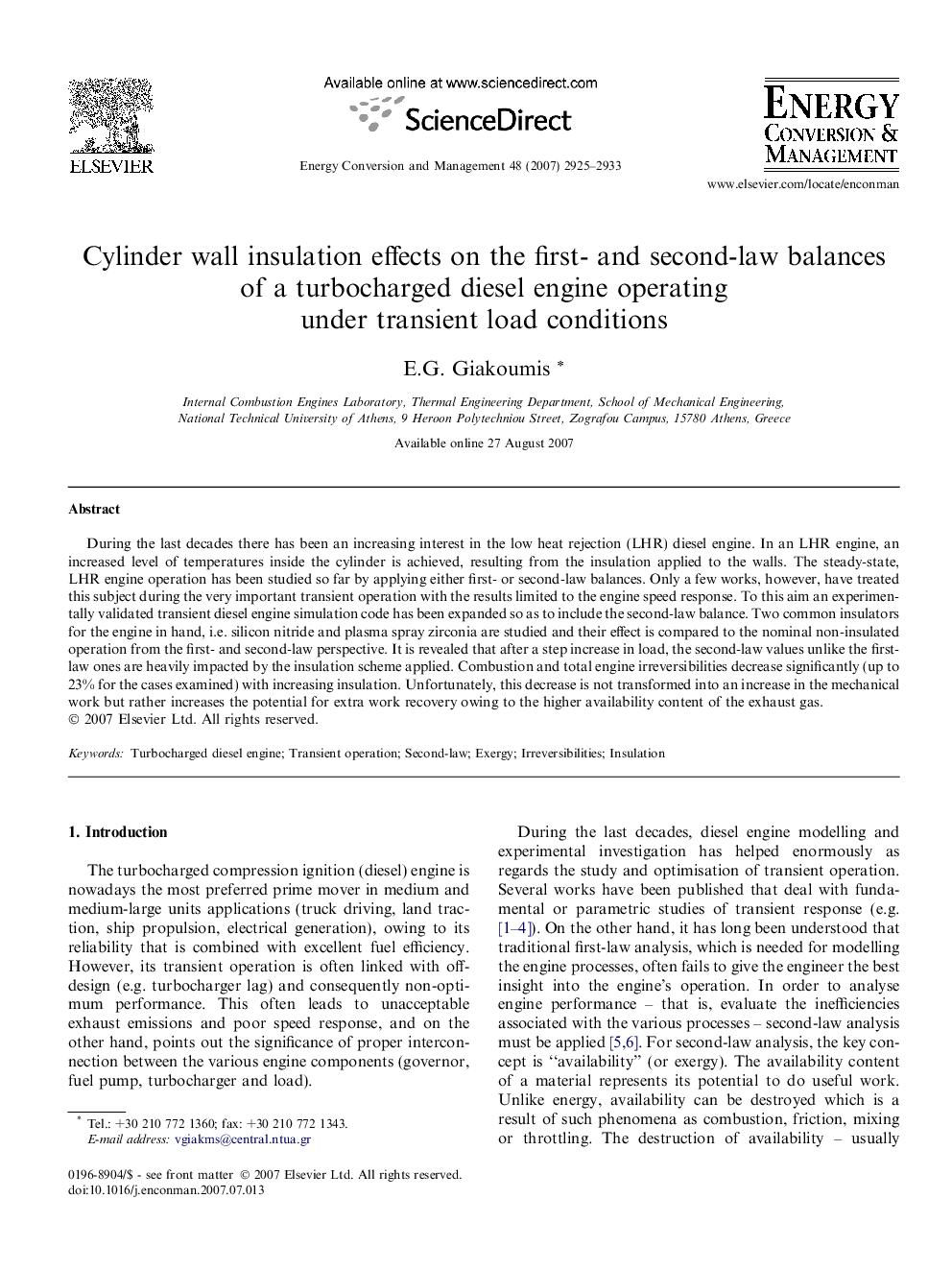| Article ID | Journal | Published Year | Pages | File Type |
|---|---|---|---|---|
| 772924 | Energy Conversion and Management | 2007 | 9 Pages |
During the last decades there has been an increasing interest in the low heat rejection (LHR) diesel engine. In an LHR engine, an increased level of temperatures inside the cylinder is achieved, resulting from the insulation applied to the walls. The steady-state, LHR engine operation has been studied so far by applying either first- or second-law balances. Only a few works, however, have treated this subject during the very important transient operation with the results limited to the engine speed response. To this aim an experimentally validated transient diesel engine simulation code has been expanded so as to include the second-law balance. Two common insulators for the engine in hand, i.e. silicon nitride and plasma spray zirconia are studied and their effect is compared to the nominal non-insulated operation from the first- and second-law perspective. It is revealed that after a step increase in load, the second-law values unlike the first-law ones are heavily impacted by the insulation scheme applied. Combustion and total engine irreversibilities decrease significantly (up to 23% for the cases examined) with increasing insulation. Unfortunately, this decrease is not transformed into an increase in the mechanical work but rather increases the potential for extra work recovery owing to the higher availability content of the exhaust gas.
